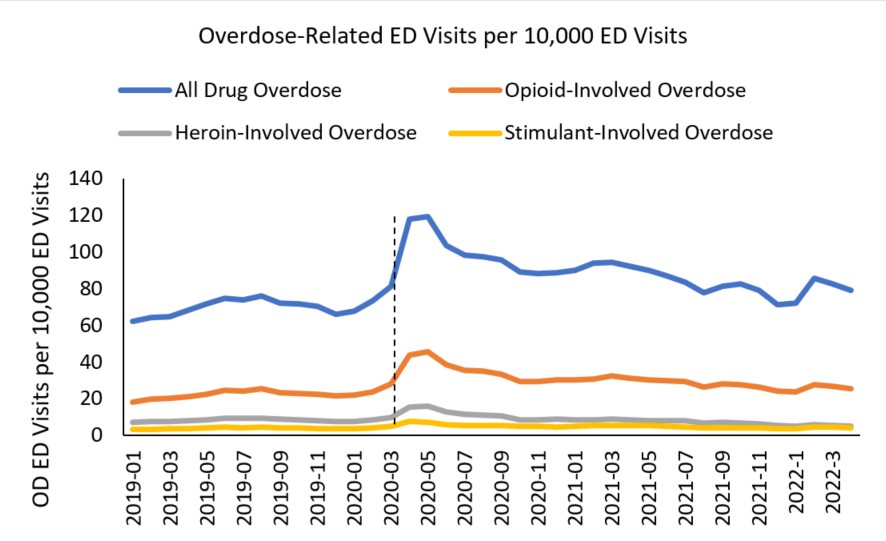
New Findings Indicate U.S. Illicit Opioid Usage Could Be 20 Times Greater Than Official Figures
A remarkable new investigation featured in JAMA Health Forum on May 9, 2025, has uncovered that the prevalence of illicit opioid use in the United States may be astonishingly more extensive than earlier assumptions. The results indicate that the extent of the opioid crisis could be over 20 times what traditional monitoring techniques have reported. The research illustrates a grim scenario of a transforming and still poorly comprehended public health emergency in the U.S., primarily driven by the lethal synthetic opioid fentanyl.
Alarming Statistics Contest Official Data
The research evaluated responses from 1,515 adults nationwide and discovered that almost 11% admitted to using illicit opioids within the past year. Notably concerning: 7.5% of participants reported using illicitly manufactured fentanyl (IMF), the powerful synthetic opioid currently responsible for an increase in overdose fatalities.
These statistics sharply contrast with the National Survey on Drug Use and Health (NSDUH), which estimated IMF usage at merely 0.3% of the adult population in 2022. The significant disparities between the studies indicate that federal data might greatly underestimate the actual incidence of opioid misuse.
David Powell, the primary author of the study and a senior economist at RAND Corporation, emphasized the need for more rapid and accurate methodologies to track drug usage trends: “Estimates of illicit opioid use are infrequent and usually emerge only years after data collection. Our study provides a means to swiftly and frequently assess illicit opioid prevalence at a minimal cost.”
Distinction Between Intentional and Unintentional Use Sheds Light on Fentanyl Danger
One of the critical takeaways from the study is its differentiation between intentional and unintentional opioid use, revealing the concealed dynamics of fentanyl exposure.
Key insights related to illicitly manufactured fentanyl comprise:
– 4.9% of adults intentionally consumed IMF
– 2.6% came across IMF unintentionally, likely mixed into other substances
– More than a third of IMF users felt they were “very likely” to face an overdose
– The majority of users recognized the elevated risk linked with fentanyl
This implies that a significant number of individuals are being inadvertently exposed to fentanyl, which has vital ramifications for harm reduction initiatives. Wider distribution of fentanyl testing kits and access to emergency overdose treatments like naloxone may be critical for avoiding deaths among unsuspecting users.
Prescription Opioids as the Entry Point
While illicit fentanyl has emerged as the focal point of the current opioid crisis, prescription opioids still notably contribute to its emergence. Among those who reported using illicit opioids:
– 39% were initially exposed through prescribed opioids
– 36% received prescription opioids from others
– Merely 25% began with illicit street opioids
This highlights the ongoing necessity of controlling opioid prescriptions, aiding medical practitioners with prescribing protocols, and guaranteeing safe disposal of unused medications.
Demographic Trends: Who Is Most Affected?
The study provides an in-depth analysis of opioid use patterns across various demographic characteristics, identifying at-risk groups within the population:
– Men exhibited use rates 5.4 percentage points greater than women
– Black Americans indicated use rates 6.6 percentage points above non-Black individuals
– Hispanic individuals revealed a 5.5 percentage-point increase in usage relative to non-Hispanics
– Adults aged 18–34 had the highest usage rates, surpassing those aged 55 and older by nearly 24 percentage points
– Adults aged 35–54 displayed rates 17.4 percentage points above those over 55
Interestingly, the study reported no notable regional differences in opioid use, although it notes that the survey size might not have been substantial enough to uncover regional patterns. This implies that the crisis is widespread throughout the nation, potentially dispelling beliefs that it is limited to certain locales or communities.
Why Are Official Estimates So Inaccurate?
The considerable divergence between federal and independent survey results may stem from differences in methodology. Conventional surveys like the NSDUH are frequently conducted in person — a factor that might discourage respondents from disclosing illicit drug use.
Conversely, the new study employed anonymous online surveys, which may promote more honest answers. While this format comes with its limitations, such as self-selection bias and challenges in confirming the identities of respondents, it appears to present a more comprehensive view of drug use behaviors.
Public Health Consequences: A Greater Crisis Than Imagined
If the new figures hold true, they not only reshape our understanding of the opioid crisis’s magnitude—they also underscore the urgent need for investment in harm reduction, treatment programs, and public awareness efforts.
By aligning their prevalence data with overdose death rates from the Centers for Disease Control and Prevention (CDC), researchers computed a chilling statistic: approximately 0.32% of illicit fentanyl users succumb to overdose annually.
“This estimate highlights the lethal nature of today’s illicit drug landscape,” stated